August in Korea is a vibrant and dynamic time for travelers seeking to experience the country’s natural beauty and rich cultural traditions. While the weather is characterized by high temperatures, humidity, and monsoon rains, Korea’s festivals, stunning landscapes, and bustling cities make it an exciting destination for summer.
From the serene beauty of Jeju Island to the vibrant energy of Seoul’s streets, visitors can find an ideal balance between adventure and relaxation. However planning is key, especially with the influx of local and international tourists during this busy season.
Despite the challenges of heat and rainfall, Korea offers many unforgettable experiences. Whether you're exploring the ancient temples of Gyeongju, hiking the volcanic peaks of Jeju, or indulging in delicious seasonal foods like makguksu and chogye guksu, August is filled with opportunities to connect with both nature and culture in Korea.
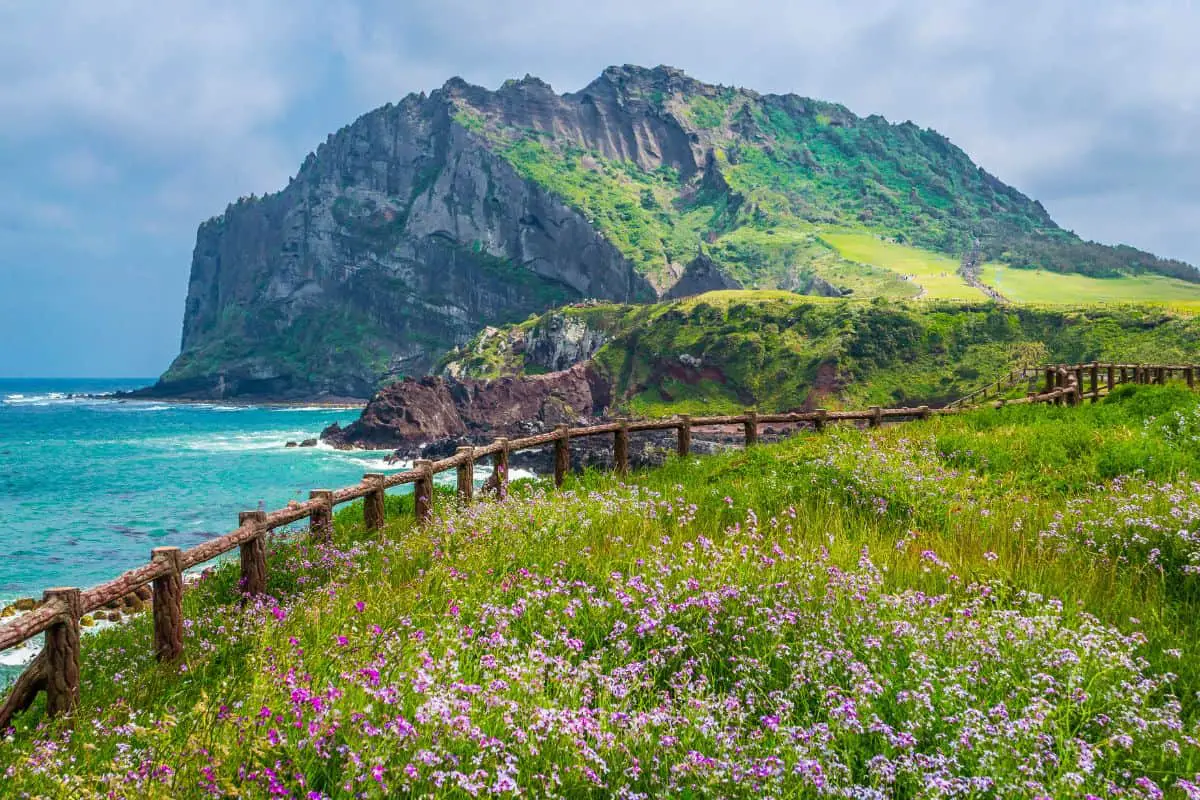
Jump to:
- 🌞 Weather in Korea in August
- 👨👩👧 Crowd and Cost of Korea in August
- 👒 What to Wear in Korea in August
- 📸 Places to Visit in Korea in August
- 🎊 Korea Festivals in August
- 🎉 Korean Public Holidays in August
- 😋 Korean Foods to Try in August
- 📝 Korea Itinerary for August
- 🎫 Korean Exclusive Tours for August
- ❓ Frequently Asked Questions
- 💬 Comments
🌞 Weather in Korea in August
August is the summer in full swing in South Korea, with high temperatures that often reach 85°F (30°C) and have very high humidity levels. The weather in August is characterized by a mix of intense heat and significant rainfall. Due to the monsoon rains, the country receives more than half of its annual rainfall during July and August.
Although South Korea is generally shielded from severe typhoons by the landmasses of China and Japan, a couple of typhoons might still pass through. These can lead to landslides in hilly areas and sporadically heavy rain days.
Despite these challenges, travelers can enjoy South Korea’s vibrant summer by hydrating well, using sunscreen liberally, and taking regular breaks in air-conditioned spots or shaded areas.
👨👩👧 Crowd and Cost of Korea in August
Despite the hot and rainy weather, South Korea's summer season attracts a large number of both domestic and foreign tourists. The summer break for South Korean school children usually spans from mid-July to late August, leading to crowded conditions at popular tourist sites and family-friendly destinations.
Due to the influx of vacationers, you can expect bustling streets, packed public transport, and longer queues at major attractions during this time. Hence, it's essential for travelers to plan their itinerary meticulously, book accommodations in advance, and arrive early at top destinations to avoid the peak crowd.
Interestingly, the crowd begins to thin out toward the end of August as students gear up to return to school. This period presents a suitable time for travelers to explore South Korea. As the humidity diminishes, temperatures ease slightly, making outdoor activities more pleasant.
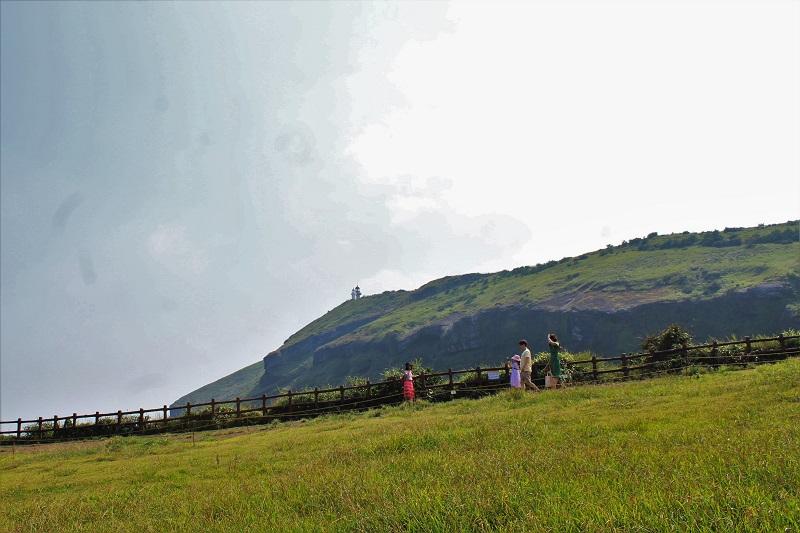
👒 What to Wear in Korea in August
Dressing appropriately for Korea’s hot and humid August weather is key to staying comfortable while exploring. Lightweight, breathable fabrics and sun protection should be prioritized to ensure an enjoyable trip.
- Lightweight cotton shirts: Cotton helps wick away moisture and keeps you cool in the humidity, making it ideal for outdoor activities.
- Loose-fitting clothing: Airy garments allow for better airflow and prevent the fabric from sticking to your skin in the heat.
- Sunglasses and a wide-brimmed hat: Protect your eyes and face from the strong summer sun during long sightseeing walks.
- Comfortable sandals or breathable sneakers: Opt for shoes that allow your feet to breathe, as you’ll likely be walking a lot in the heat.
- Light raincoat or foldable umbrella: Be prepared for sudden showers from the monsoon rains without being weighed down by heavy rain gear.
- Moisture-wicking socks: These will help keep your feet dry and comfortable, especially during long days of walking.
- Sunscreen and SPF lip balm: Protect your skin from harmful UV rays with regular applications of sunscreen, and don’t forget to protect your lips as well.
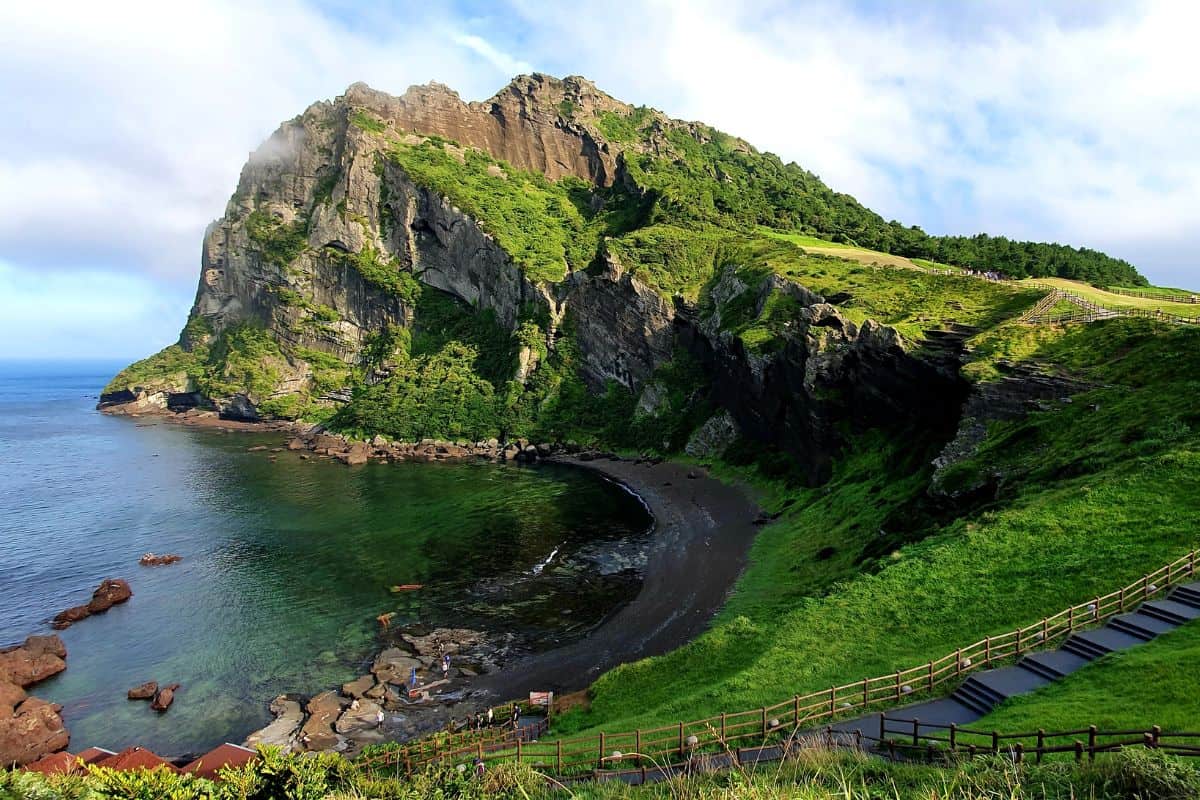
📸 Places to Visit in Korea in August
Jeju Island
Located southwest of the Korean Peninsula, Jeju Island is Korea's largest island and one of its most beloved vacation spots. Known for its unique local atmosphere and stunning natural scenery, the island provides a tranquil retreat from the hustle and bustle of urban life.
The island boasts an impressive collection of volcanic lava tubes, which comprise nearly 10% of its area and are recognized as a UNESCO World Natural Heritage Site.
These lava tubes, along with other natural wonders such as the Seongsan Ilchulbong Tuff Cone, Manjanggul Lava Tube, and Hallasan National Park, create a mesmerizing landscape that invites exploration and adventure.
A visit to Seongsan Ilchulbong Tuff Cone is a must for any traveler. Formed around 5,000 years ago from an underwater volcanic eruption, it is today a testament to Jeju's dynamic geological history.
This landmark is especially famed for its breathtaking sunrise views, making it one of the top ten scenic spots on the island.
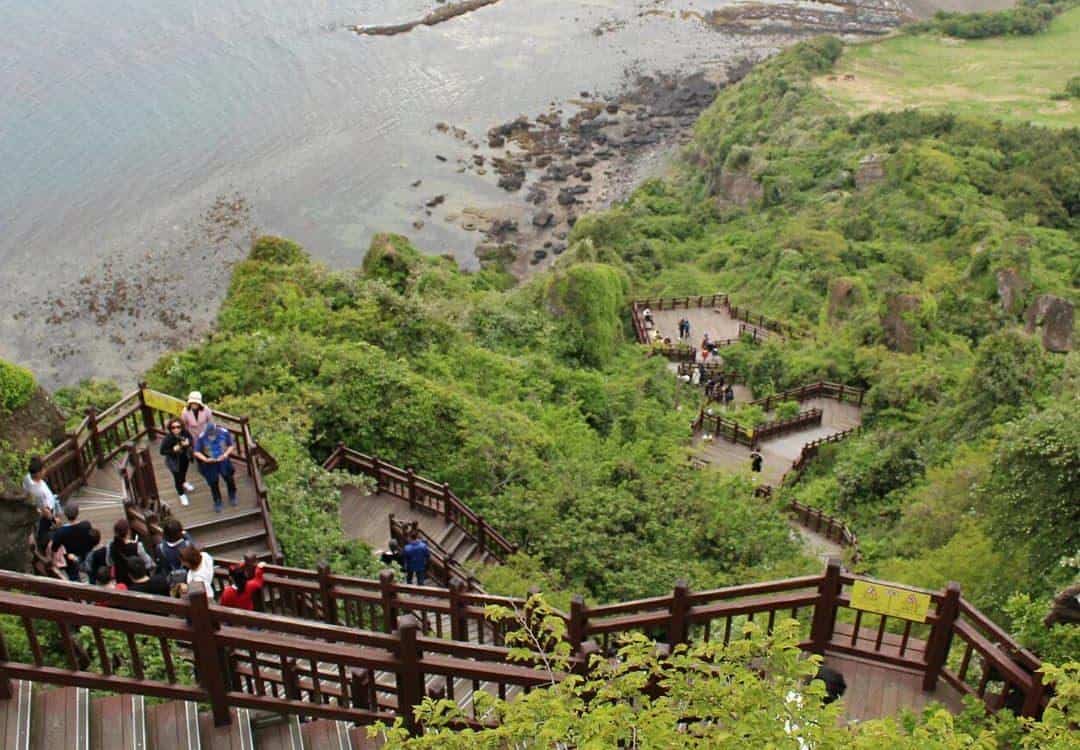
Just a short drive away, Cape Seopjikoji offers another captivating sight with its unique cliff formations jutting into the ocean. Known as the "Cape of Small Land," this area melds hill and ocean in a picturesque display, often accompanied by the sight of Jeju ponies grazing on field grasses.
For those keen on experiencing Jeju's distinctive oreum (parasitic cones), the Yongnunioreum Parasitic Cone is not to be missed. With approximately 360 of these natural formations scattered across the island, Yongnunioreum stands out due to its accessible trail and moderately gentle slope, making it perfect for trekking.
In stark contrast to Yongnunioreum’s open vistas, Bijarim Forest offers a serene woodland escape. This dense forest is home to hundreds of nutmeg yew trees, some of which have lived for upwards of 700 years, earning it the nickname “Forest of a Thousand Years.”
The 800-year-old tree and the conjoined nutmeg yews are must-see sights that add to the forest’s enchanting allure.
Finally, no itinerary for Jeju would be complete without exploring the Manjanggul Lava Tube, part of the Geomunoreum parasitic cone system, also a UNESCO World Natural Heritage site. Open to the public, this cave presents a journey into an underground realm of intricate lava formations and awe-inspiring rock pillars.
The cave maintains a stable temperature between 52°-65°F (11°-21℃) throughout the year, providing a comfortable and fascinating underground adventure regardless of the season.
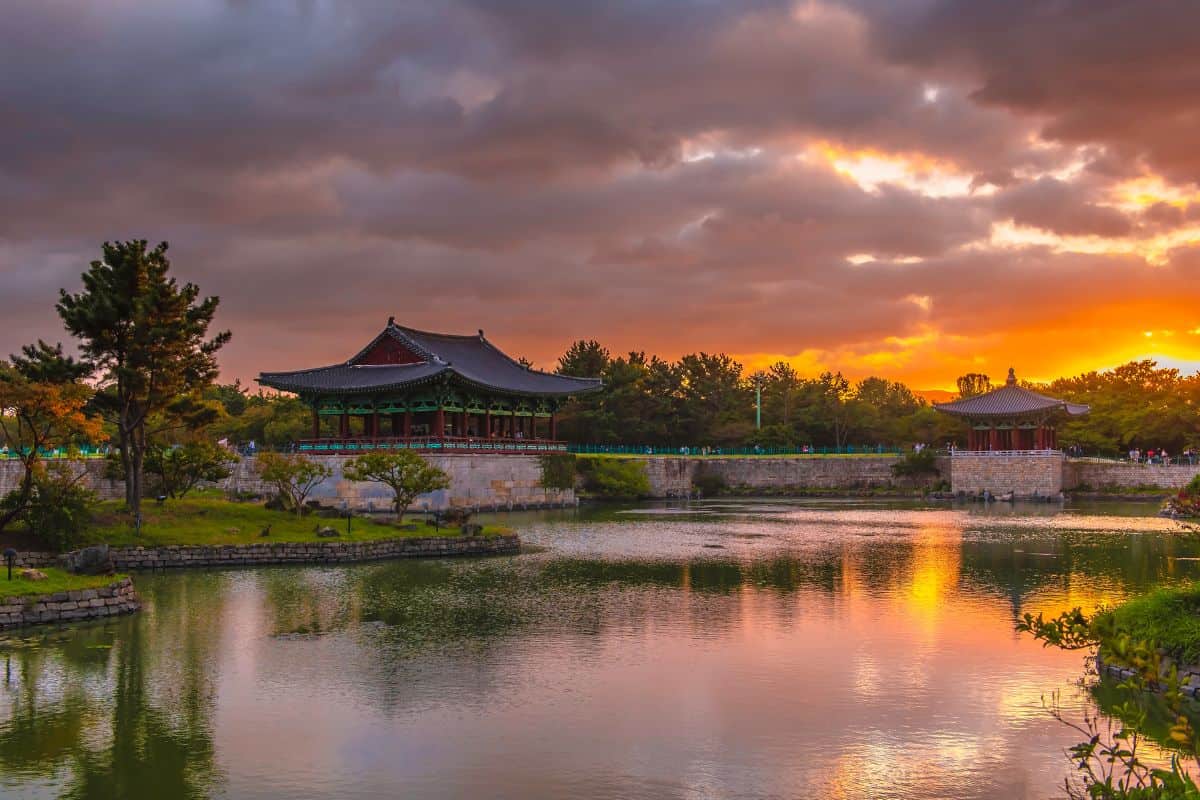
Donggung Palace and Wolji Pond
Donggung Palace and Wolji Pond, located in Gyeongju, are historically significant sites from the Silla period. The palace served as a secondary residence for the crown prince and was the venue for grand banquets held during festive events or for the reception of esteemed guests.
Notably, it was here that King Gyeongsun of Silla hosted King Wang Geon of Goryeo in 931 to lament the kingdom's precarious situation following an invasion by Gyeon Hwon.
The historical relevance of this site is deeply intertwined with the complexities and transitions that marked the latter years of the Silla dynasty. King Munmu's design included the planting of vibrant flowers and trees, along with the introduction of rare birds and animals, crafting a serene natural oasis.
Despite the passage of time and Silla's decline, the poetic symbolisms attributed to this site continued to resonate, with poets reflecting on its past splendor.
The rediscovery of pottery fragments in the 1980s, inscribed with the name "Wolji," confirmed its historical name, meaning "a pond that reflects the moon," restoring its ancient title and adding another layer of intrigue to this captivating location.
Gyeongju Bulguksa Temple
Bulguksa Temple is a testament to the rich Buddhist culture that flourished during the Silla kingdom era. Initially constructed during the 15th year of King Beopheung's reign (514-540), this magnificent structure was intended to promote peace and prosperity for all.
Despite its humble beginnings, Bulguksa Temple was later rebuilt in 751 by Kim Dae Seong, becoming a grand monument adorned with intricate artwork and serene gardens.
Travelers will be captivated by the temple's majestic architecture and its tranquil ambiance, making it a must-visit location for anyone exploring Gyeongju.
However, Bulguksa Temple's journey through history has been tumultuous. It endured significant damage when it caught fire during the Imjin War (1592-1598), leading to several episodes of theft and deterioration over the centuries.
Thankfully, in 1920, a comprehensive restoration effort began, which continues today. The perseverance and dedication to its restoration have paid off magnificently, as the temple now houses 7 national treasures and numerous other important cultural heritages.
Recognized for its historical and cultural significance, Bulguksa Temple, along with the nearby Seokguram Grotto, was designated a World Cultural Heritage Site by UNESCO in December 1995.
Today, visitors can immerse themselves in its rich history and appreciate the timeless beauty that has been painstakingly preserved.

Odaesan National Park
Odaesan National Park, nestled in the Taebaek Mountain range, is a haven for nature enthusiasts and cultural history buffs alike.
Towering above the park is Birobong Peak, standing majestically at an impressive 1,563 meters, accompanied by 5 other significant peaks. This natural sanctuary is not only renowned for its stunning landscapes but also its rich cultural heritage.
The park's most notable attractions are the Sangwonsa and Woljeongsa Temples, which glimpse Korea's profound Buddhist history. Stepping into Odaesan feels like entering a different realm, where every turn presents a picturesque view and a chance to connect with the past.
Beyond its visual splendor, Odaesan National Park is important in Korean history. It's the site of the Odaesansago National History Archives, famously known for housing the Veritable Records of the Joseon Dynasty.
The park's meticulous ecosystem preservation provides a perfect backdrop for various hiking trails, allowing visitors to fully immerse themselves in its natural beauty. Each season brings a new festival and a unique charm to the landscape, making it a year-round destination for travelers.
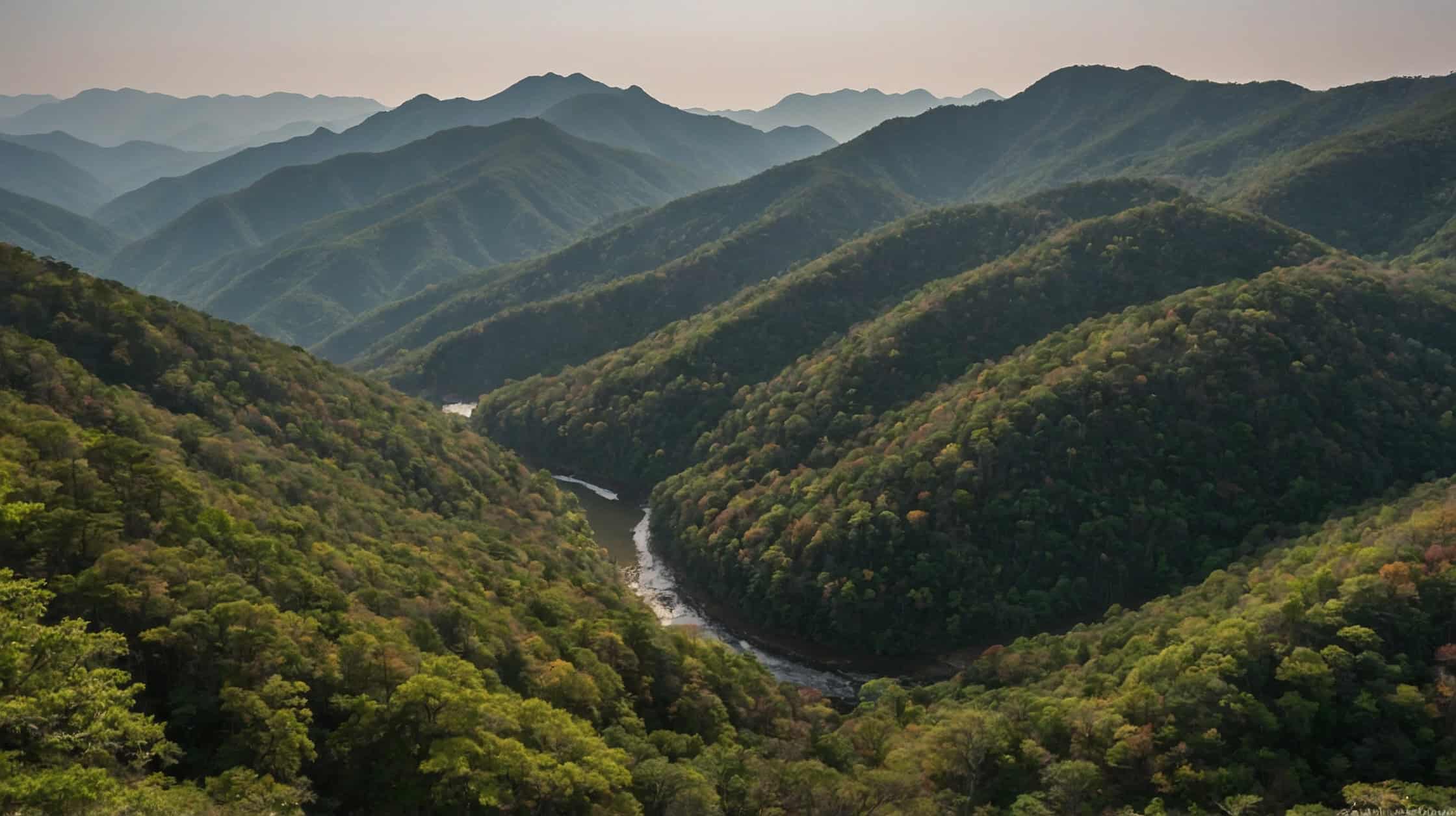
Haeundae Beach, Busan
Haeundae Beach is renowned as Busan's most famous beach, drawing locals and tourists alike to its pristine shores every summer. The beach stretches approximately 1.5 kilometers along a charming coastline, with a width ranging from 100 to 160 feet (30 to 50 meters), offering plenty of space for visitors to enjoy.
Its shallow bay creates ideal conditions for swimming and wading, making it a favorite spot for water enthusiasts of all ages. The surrounding area is brimming with accommodations, ranging from luxury hotels to quaint private guesthouses, ensuring every visitor can find the perfect place to stay.
Adding to its allure, Haeundae Beach hosts various cultural events and festivals throughout the year, providing entertainment and unique experiences for travelers. Key attractions in the vicinity include Dongbaekseom Island, the Busan Aquarium, a yachting dock, and the Busan Exhibition and Convention Center (BEXCO)
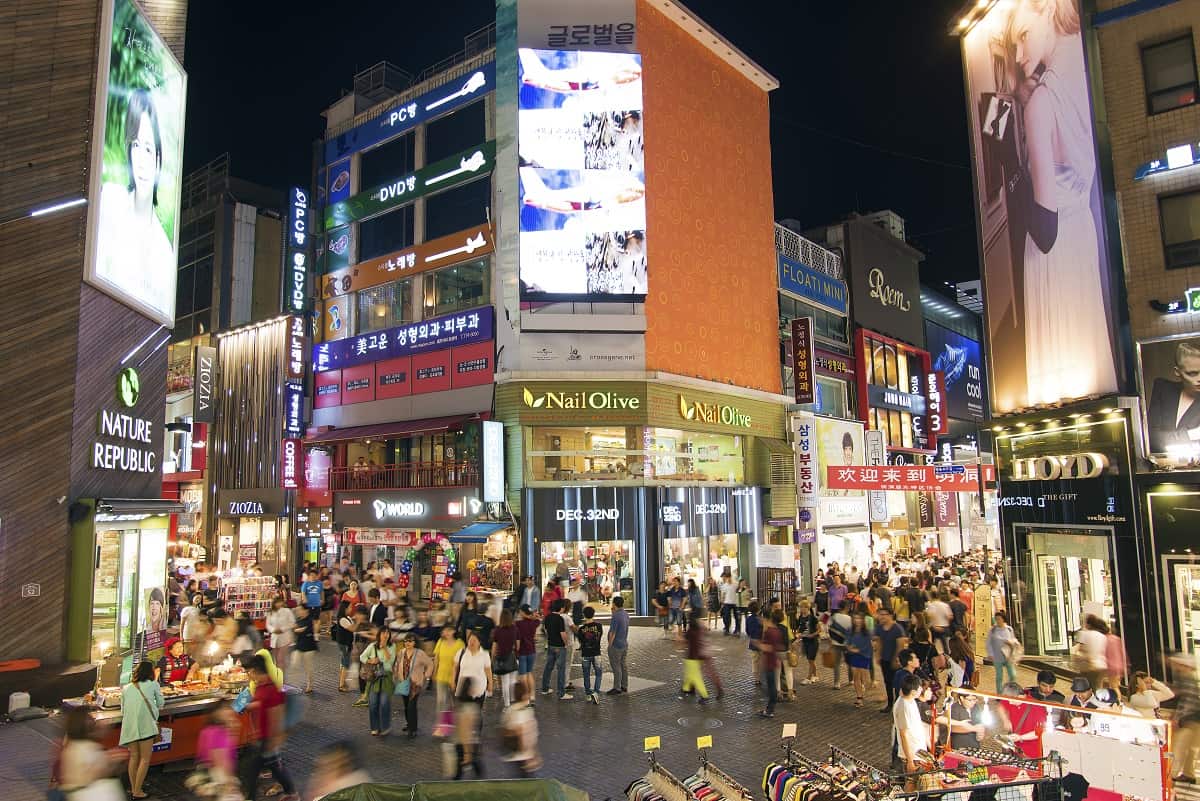
Myeongdong
Myeongdong stands as one of the premier shopping destinations in Seoul, offering a vibrant blend of retail experiences that attract locals and tourists. This bustling district features 2 main streets that intersect at the heart of the block, starting from Myeong-dong Subway Station on Seoul Subway Line No. 4 and running through to the Lotte Department Store at Euljiro.
Numerous brand-name shops and department stores line these streets and the surrounding alleys, offering an array of products, including clothes, shoes, and accessories. Unlike the traditional night markets of Namdaemun or Dongdaemun, Myeong-dong boasts many designer brands and luxury labels, making it a haven for fashion enthusiasts.
Among the well-known department stores found here are Lotte Department Store, Shinsegae Department Store, Myeong-dong Migliore, Noon Square, and M Plaza, each carrying a variety of premium and fashionable goods at reasonable prices.
Beyond shopping, Myeong-dong also caters to a wide array of culinary tastes. The area is dotted with family restaurants, fast food outlets, and dining options that range from Korean and Western to Japanese cuisine.
Notably, many eateries in Myeong-dong are renowned for their dongaseu (pork cutlet) and kalguksu (noodle soup), offering visitors a chance to indulge in some local flavors along with the copious options for Korean street foods.
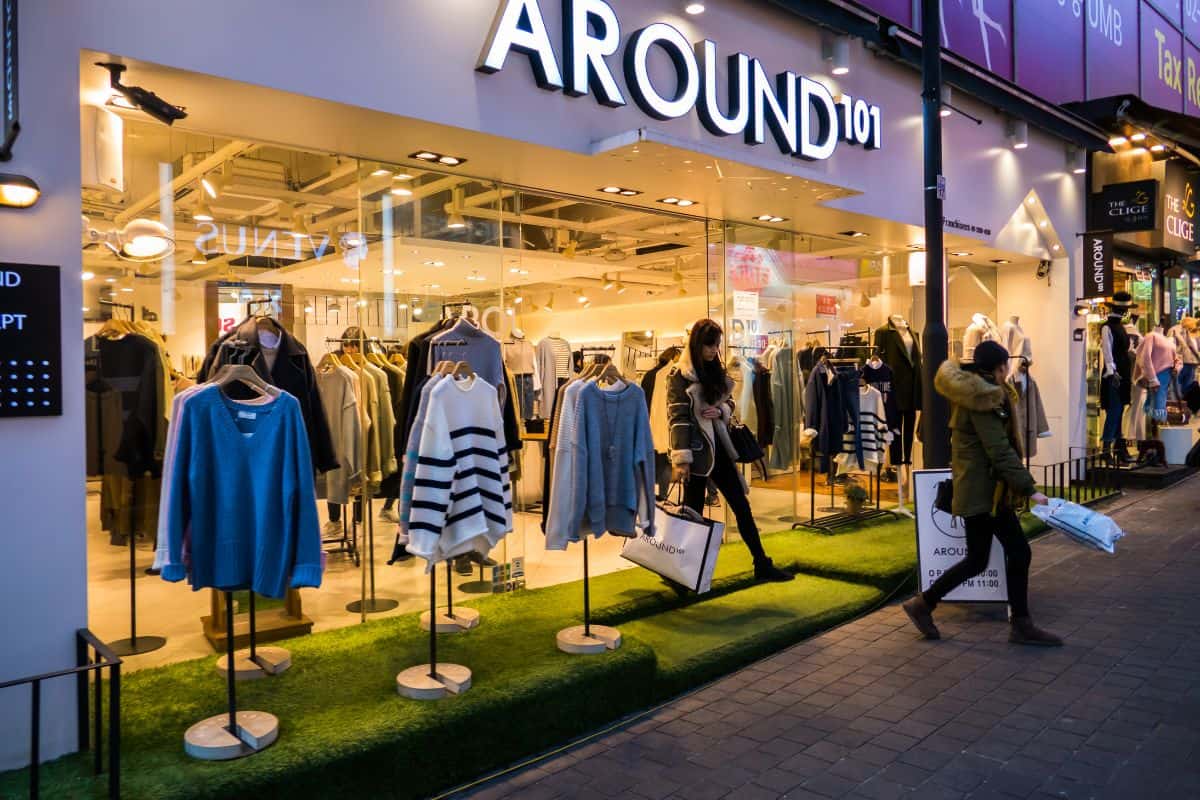
🎊 Korea Festivals in August
Hwacheon Tomato Festival
Held annually in the scenic town of Hwacheon, the Hwacheon Tomato Festival is undoubtedly one of Korea's most unique summer events. This vibrant festival transforms the town into a lively celebration centered around the quintessential summer fruit—the tomato.
Visitors can enjoy fun and exciting activities, ranging from tomato-themed games and competitions to tomato-slathered wrestling matches.
For those less inclined towards physical activities, there are plenty of opportunities to indulge in delicious tomato-based dishes, ensuring a delightful culinary experience.
A visit to the Hwacheon Tomato Festival promises unforgettable memories, whether shared with family or friends. Beyond the playful chaos of the tomato-filled attractions, the festival also offers a glimpse into the town's charming local culture and traditions.
Even the pickiest traveler will find something to enjoy, from exploring picturesque landscapes to engaging with locals in workshops and cultural performances.
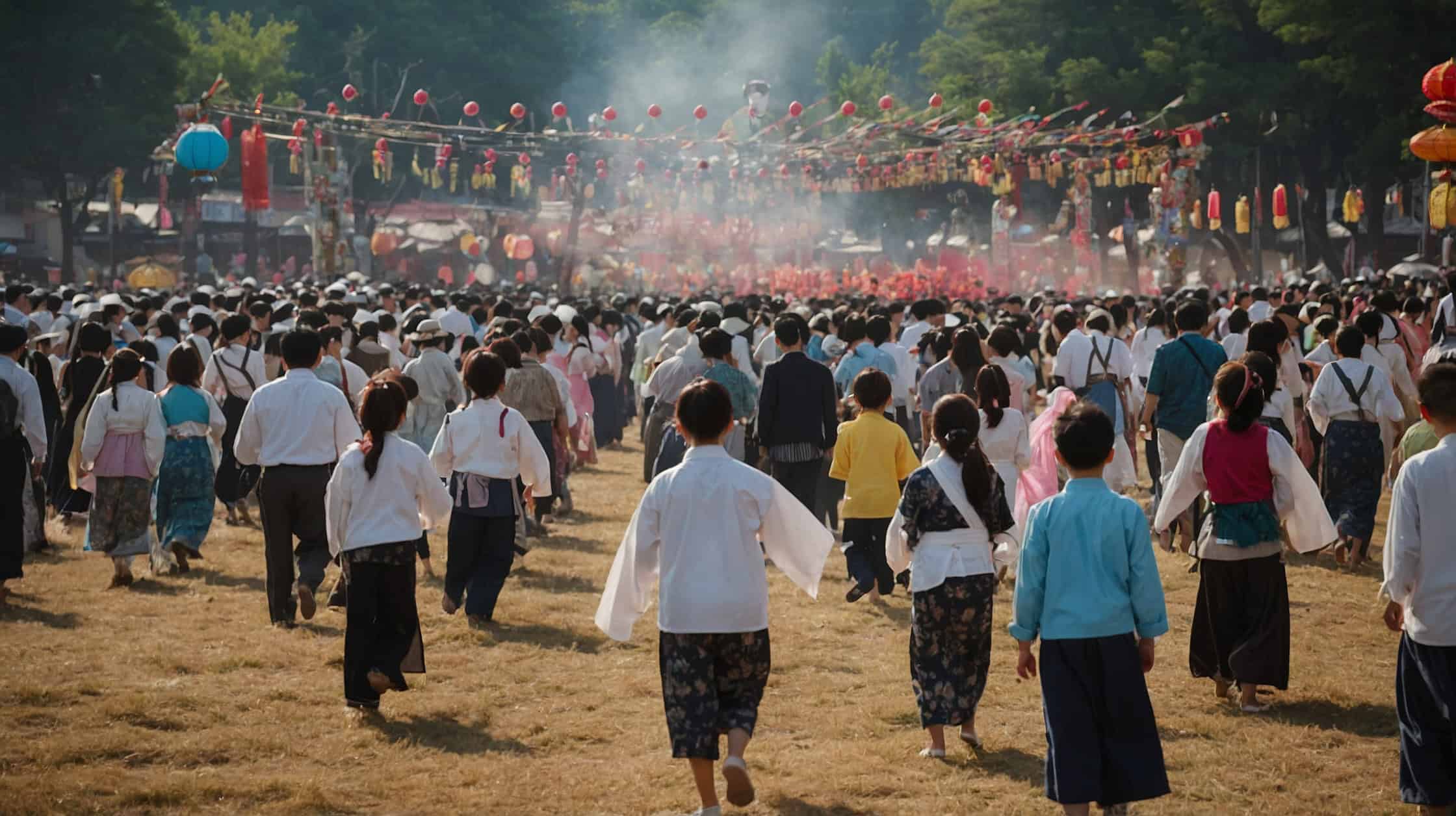
Incheon Pentaport Rock Festival
The Incheon Pentaport Rock Festival stands as one of Korea's most prominent live music events, lighting up August with electrifying performances. Held at the scenic Songdo Moonlight Festival Park in Incheon, this festival draws a dynamic mix of local and global musicians, creating an unparalleled musical diversity and exciting atmosphere.
Attendees can look forward to thrilling rock, indie, and alternative music performances that resonate through the park, promising a high-energy experience for all music aficionados. For those planning to attend, the Pentaport Rock Festival offers more than just fantastic music.
The venue features an array of food and beverage stalls, providing a wide selection of delectable options to keep festival-goers fueled throughout the event. The park’s layout also ensures ample spots to relax and take in the vibrant surroundings between sets.
Whether traveling solo or in a group, visitors will find the festival an ideal opportunity to discover new bands, meet fellow music enthusiasts, and enjoy the spirit of one of Korea's largest and most beloved music festivals.
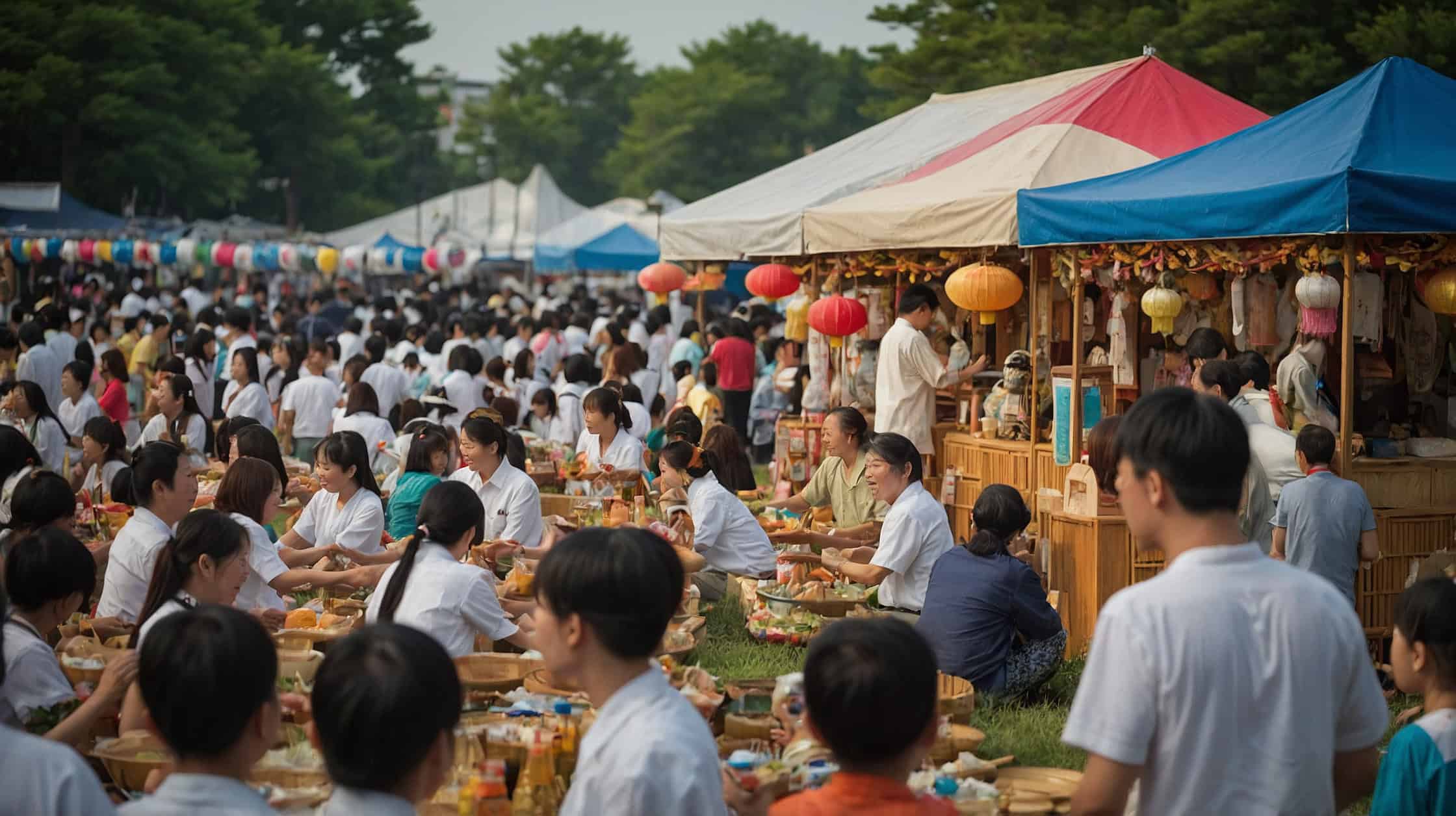
Seoul Fringe Festival
Nestled in the vibrant neighborhood of Mapo-gu, the Seoul Fringe Festival embodies the spirit of artistic freedom and expression. Celebrated during the latter half of August, this eclectic festival highlights independent artists by showcasing their talents across various indoor and outdoor venues.
From contemporary dance and multimedia art to experimental theater and music performances, the Seoul Fringe Festival offers a diverse artistic experience to travelers seeking to explore Korea’s dynamic cultural landscape.
The festival offers a treasure trove of unique and engaging experiences for attendees. The atmosphere is energized with creativity, inviting visitors to wander through art installations, attend live performances, and participate in interactive workshops.
Food stalls and local eateries add to the festive ambiance, offering appetizing local and international dishes to delight the taste buds.
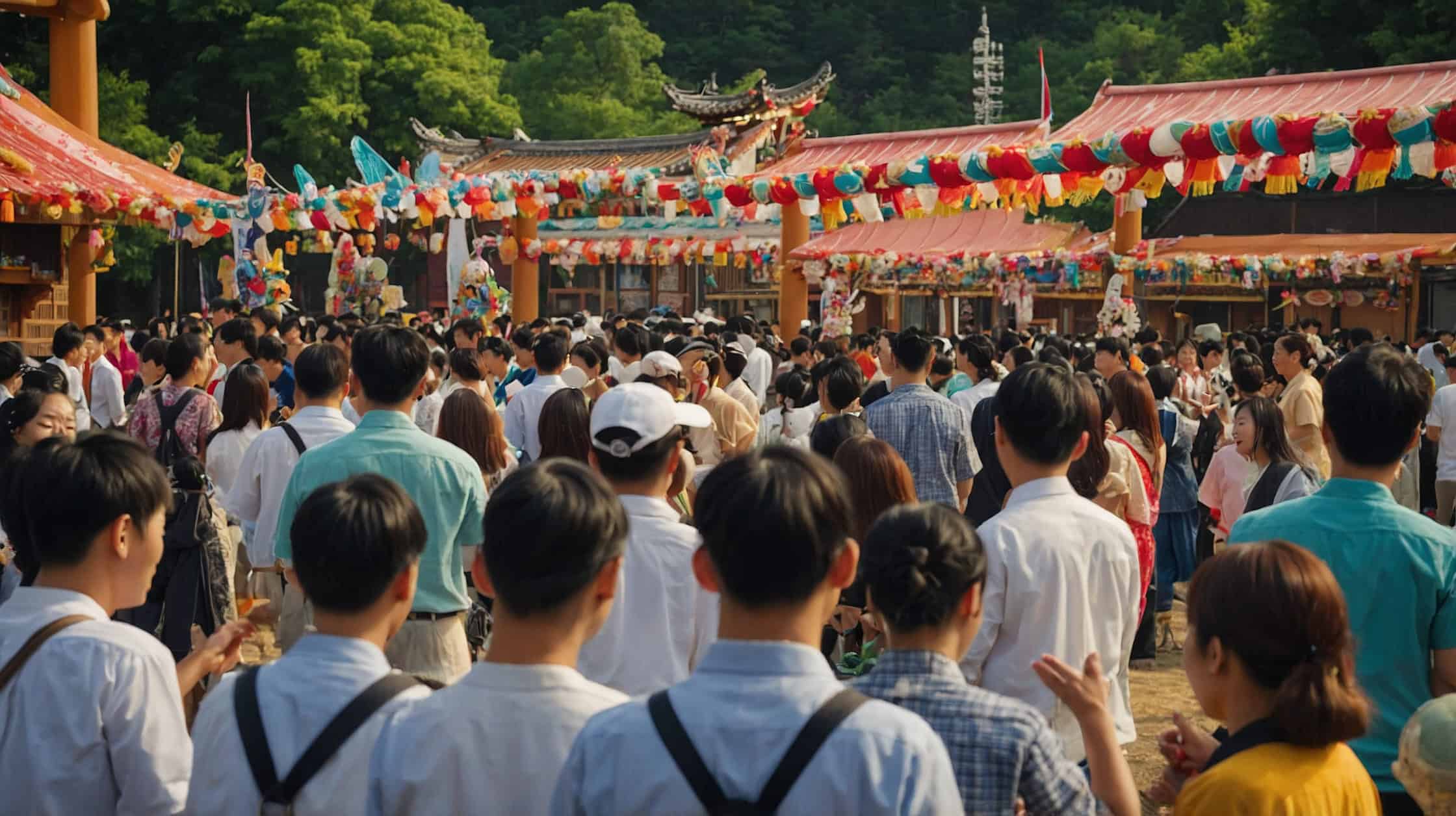
Tongyeong Hansan Battle Festival
At the Tongyeong Hansan Battle Festival, visitors can travel back in time and witness a thrilling reenactment of the 1592 Great Battle of Hansan. This historic clash saw the mighty Joseon fleet triumph over Japan's formidable amphibious forces, led by the revered Admiral Yi Sun-Sin.
The victory was pivotal, as it staved off Japan’s attempts at colonizing Korea for another 300 years. The festival brilliantly brings this sea battle to life with a spectacular display that includes everything from live performances to awe-inspiring air shows.
This is more than just a history lesson; it's an experience that vividly illustrates Korea’s resilient spirit and storied maritime legacy.
Families are in for an action-packed adventure with exciting activities for all ages. There’s something magical about watching fireworks light up the night sky over Yi Sun-sin Waterpark, where children can partake in interactive programs designed to spark their imagination and curiosity.
🎉 Korean Public Holidays in August
National Liberation Day
National Liberation Day, known as "Gwangbokjeol," is celebrated every year on August 15 to honor the day Korea was freed from 35 years of Japanese colonial rule. This pivotal day in 1945 marked the dawn of a new era for Korea, leading to the restoration of the nation’s sovereignty.
Following Korea’s liberation in October 1945, the U.S. military government abolished existing holidays imposed by the Japanese and introduced new public observances.
The significance of August 15 doesn't end with liberation; on this date in 1948, Korea proudly established its government, emphasizing its newfound independence and national identity.
Visitors planning to experience Gwangbokjeol can expect various festivities highlighting Korea’s historical journey and cultural pride. The day typically includes patriotic performances, flag ceremonies, and performances that bring the nation’s rich history to life.
Public spaces and landmarks swell with vibrant displays of national pride, offering travelers a unique insight into Korea's enduring spirit and resilience.
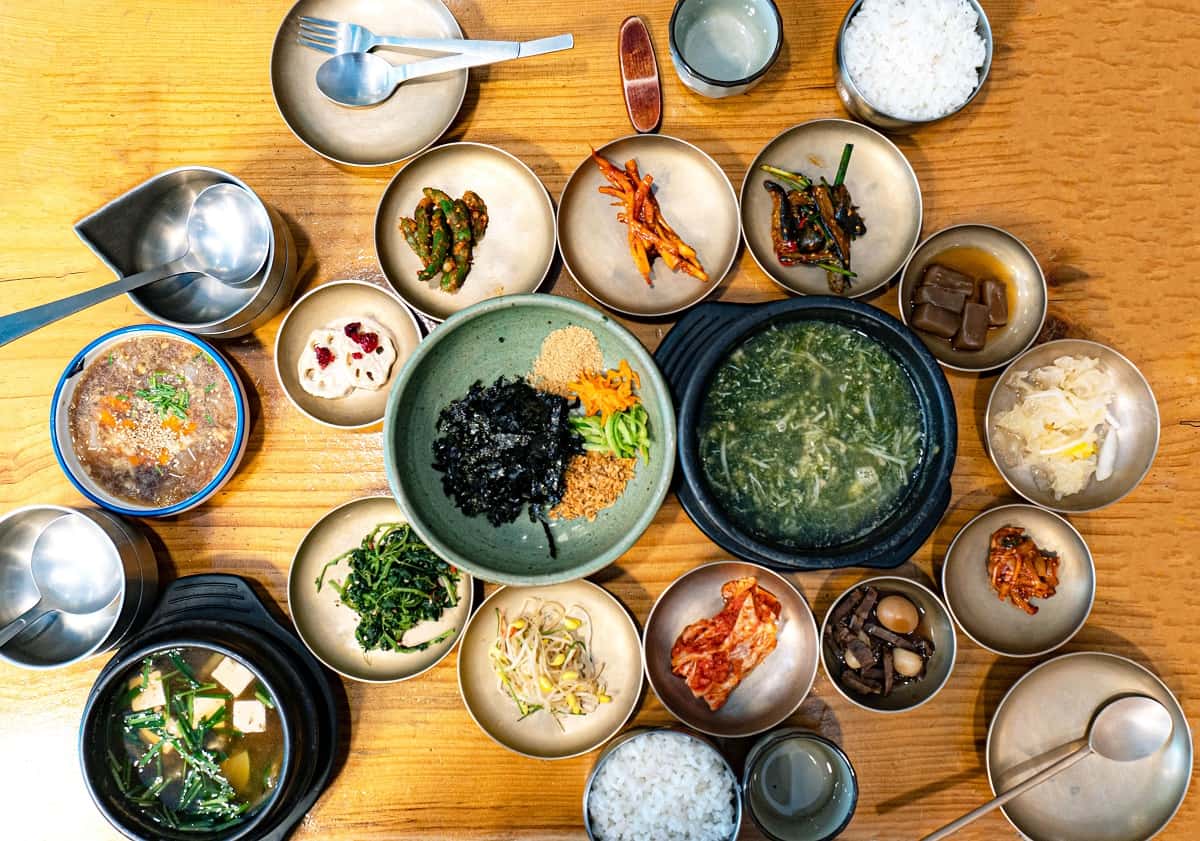
😋 Korean Foods to Try in August
Makguksu
In the heat of the Korean summer, cold noodles such as makguksu rise to the forefront of seasonal specialties. Makguksu features buckwheat noodles, which are boiled to perfection and then immersed in cold broth.
This broth, occasionally infused with the savory depth of kimchi, provides a refreshing contrast to the chewy noodles. Complementing the noodles, crisp cucumber, fresh vegetables, and tender slices of meat are added, all harmoniously topped with a spicy red chili paste.
Makguksu stands apart from other cold noodle dishes like naengmyeon primarily due to its exclusive use of buckwheat flour for the noodles. This gives makguksu its distinctive chewy texture, which is both hearty and satisfying.
Chogye guksu
Another must-try dish for travelers during August is chogye guksu. This chicken-based delight stands proudly alongside other famous chicken dishes such as samgyetang and jjimdak. What sets chogye guksu apart is its unique preparation and flavor profile.
The dish features knife-cut noodles served in a chilled broth made from chicken, vinegar, and a medley of herbs, including mustard. The cold, tangy broth not only makes chogye guksu refreshing but also accentuates the flavors of the tender chicken and the perfectly textured noodles.
The addition of vinegar introduces a distinct sharpness that pairs harmoniously with the subtler herbal notes.
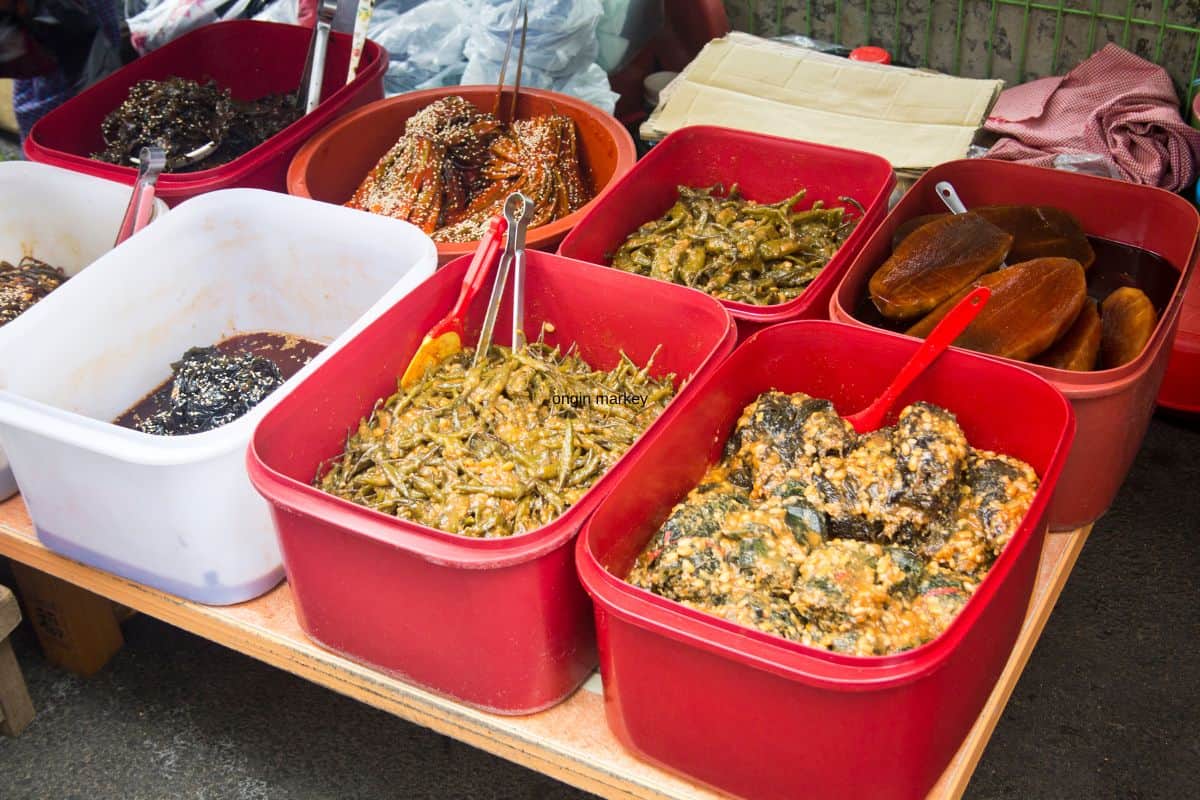
Oi-muchim
A popular summer dish that travelers should definitely try is oi-muchim, a delightful and refreshing cucumber salad. This dish is often served as a banchan (side dish) and features thinly sliced cucumbers dressed with a combination of vinegar, onions, red chili pepper flakes, and sesame seeds.
The simplicity of the ingredients belies the complexity of the flavors, which balance a sweet and sour profile perfectly suited for hot weather. The tangy and spicy dressing gives oi-muchim its unique character, making it an ideal accompaniment to heavier main courses or as a light, standalone snack.
Jjimdak
Chicken unquestionably reigns as a great summer food, and jjimdak is one of the most delectable ways to savor this beloved protein. Jjimdak involves chicken meticulously cooked with vegetables like peppers, mushrooms, and carrots, all infused with a savory soy-based sauce.
The dish is then complemented with glass noodles, which soak up the rich flavors and elevate the overall taste experience. This hearty and flavorful meal is perfect for sharing with friends and family during summer evenings, creating communal and memorable dining moments.
Typically, jjimdak is served alongside white kimchi soup, which adds a refreshing element to the meal. For those wanting to complete their culinary journey, a serving of rice must be included. This allows for the delightful process of bokkeumbap, where diners can mix the remaining sauce and ingredients with rice towards the end of the meal.
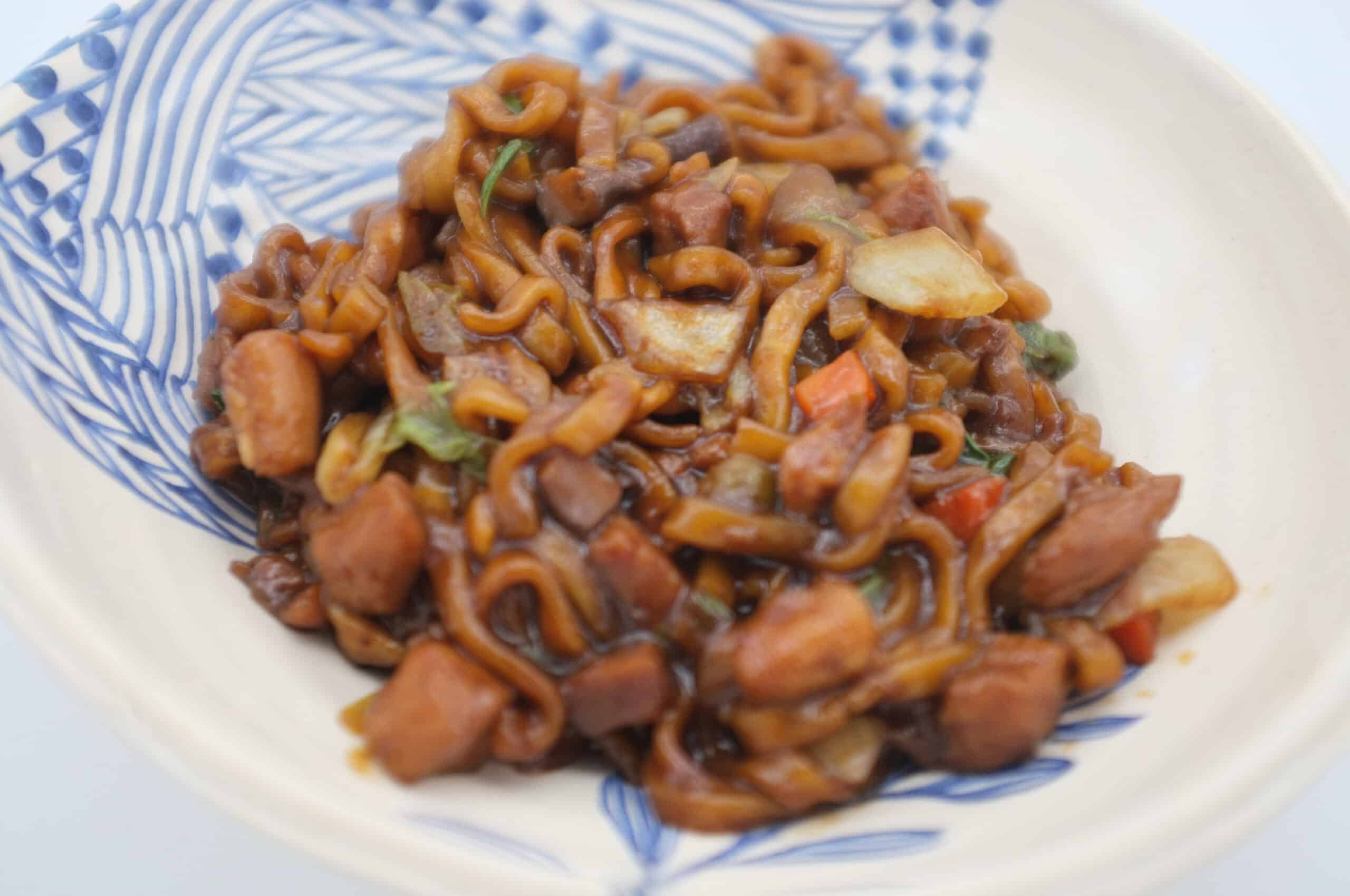
Sikhye
Sikhye, or rice punch, is a perfect example of a traditional Korean drink with a rich history. Originally enjoyed during special holidays, it has become a beloved year-round refreshment, particularly appreciated during summer months.
The sweet and refreshing flavor of sikhye offers a perfect respite from the heat, making it an ideal drink to cool down with. This delightful beverage is a treat for the taste buds and offers numerous health benefits.
It's reputed to aid in preventing indigestion and promote better blood circulation, which adds to its appeal. Today, sikhye frequently graces the menus of Korean restaurants and is often served after meals to cleanse the palate.
📝 Korea Itinerary for August
Day 1: Arrival in Jeju and Exploring the East Coast
Upon arrival at Jeju International Airport, head directly to your accommodation in Jeju City near the island’s east coast, to minimize travel time. After checking in, a visit to Seongsan Ilchulbong Tuff Cone, also known as Sunrise Peak, is a great way to start your trip.
After taking in the panoramic landscapes, explore Seopjikoji, a picturesque coastal area featuring cliffs and ocean views. For lunch, enjoy fresh seafood at one of the local restaurants near Seongsan.
End the day with a visit to the Manjanggul Lava Tube, an impressive natural wonder that allows visitors to explore the island's recent volcanic past. With a cool and stable temperature inside the cave, it’s a refreshing way to end the day.
Day 2: Exploring Hallasan National Park and Jeju’s Oreum
Start the 2nd day by hiking in Hallasan National Park, home to South Korea’s highest peak. The park offers several trails of varying difficulty, making it accessible for both seasoned hikers and casual visitors to get to the top for a view of the entire island.
Choose a trail suited to your fitness level and take in the lush landscapes, volcanic features, and diverse flora and fauna. After a morning of hiking, have lunch at a traditional restaurant serving heuk-dwaeji (Jeju’s famous black pork) or jeonbokjuk (abalone porridge).
In the afternoon, visit Yongnunioreum, one of Jeju’s many oreum (volcanic cones). This relatively easy hike rewards visitors with spectacular views of the surrounding countryside and coastline.
End the day with a relaxing visit to Bijarim Forest, a serene woodland area known for its ancient nutmeg yew trees. This peaceful location is perfect for unwinding after an active day, especially if you enjoy a quiet nature walk.
Day 3: Cultural Immersion in Jeju
On day 3, explore Jeju’s rich cultural heritage by visiting Jeju Folk Village, a living museum that recreates traditional life on the island during the 19th century. Wander through restored homes, experience local crafts, and gain insight into Jeju’s unique cultural practices.
Afterward, enjoy a leisurely lunch at one of the local cafes, sampling dishes like kimchi stew or seafood pancakes. In the afternoon, head to Jeju Stone Park, an outdoor park showcasing the island’s volcanic heritage and the deep spiritual connection between the local people and stone culture.
The park’s expansive grounds offer plenty of space for walking and reflecting on Jeju’s history. As the day winds down, head to the southern coast for dinner in Seogwipo and explore Cheonjiyeon Waterfall at dusk, which is beautifully illuminated in the evening.
Day 4: Day Trip to Gyeongju – Donggung Palace and Wolji Pond
On day 4, take an early morning flight from Jeju to the mainland and head to Gyeongju, South Korea’s ancient capital during the Silla dynasty. Start your day with a visit to Donggung Palace and Wolji Pond, a historical site known for its stunning reflections and historical significance.
Spend the late morning exploring the palace and its tranquil surroundings, then enjoy a late lunch at a nearby restaurant serving gyeongju-style bibimbap or ssambap (rice wrapped in leafy vegetables).
Afterward, explore Gyeongju’s cultural landmarks, including the Gyeongju National Museum, to learn about the area’s deep historical roots. In the evening, return to Donggung Palace and Wolji Pond, which becomes even more magical as it is beautifully lit after dark.
Day 5: Gyeongju – Bulguksa Temple and Odaesan National Park
On the final day, visit Bulguksa Temple, a UNESCO World Heritage site and one of Korea’s most famous temples, known for its stunning architecture and serene atmosphere.
After exploring the temple grounds, continue your cultural exploration with a trip to the nearby Seokguram Grotto, another UNESCO site that offers breathtaking views of the surrounding mountains. For lunch, enjoy a simple meal at a local temple restaurant serving traditional vegetarian or vegan Korean food made with ingredients foraged from the nearby farming regions.
In the afternoon, nature lovers can visit Odaesan National Park, located in the Taebaek Mountain range, known for its scenic hiking trails and Buddhist temples like Sangwonsa and Woljeongsa.
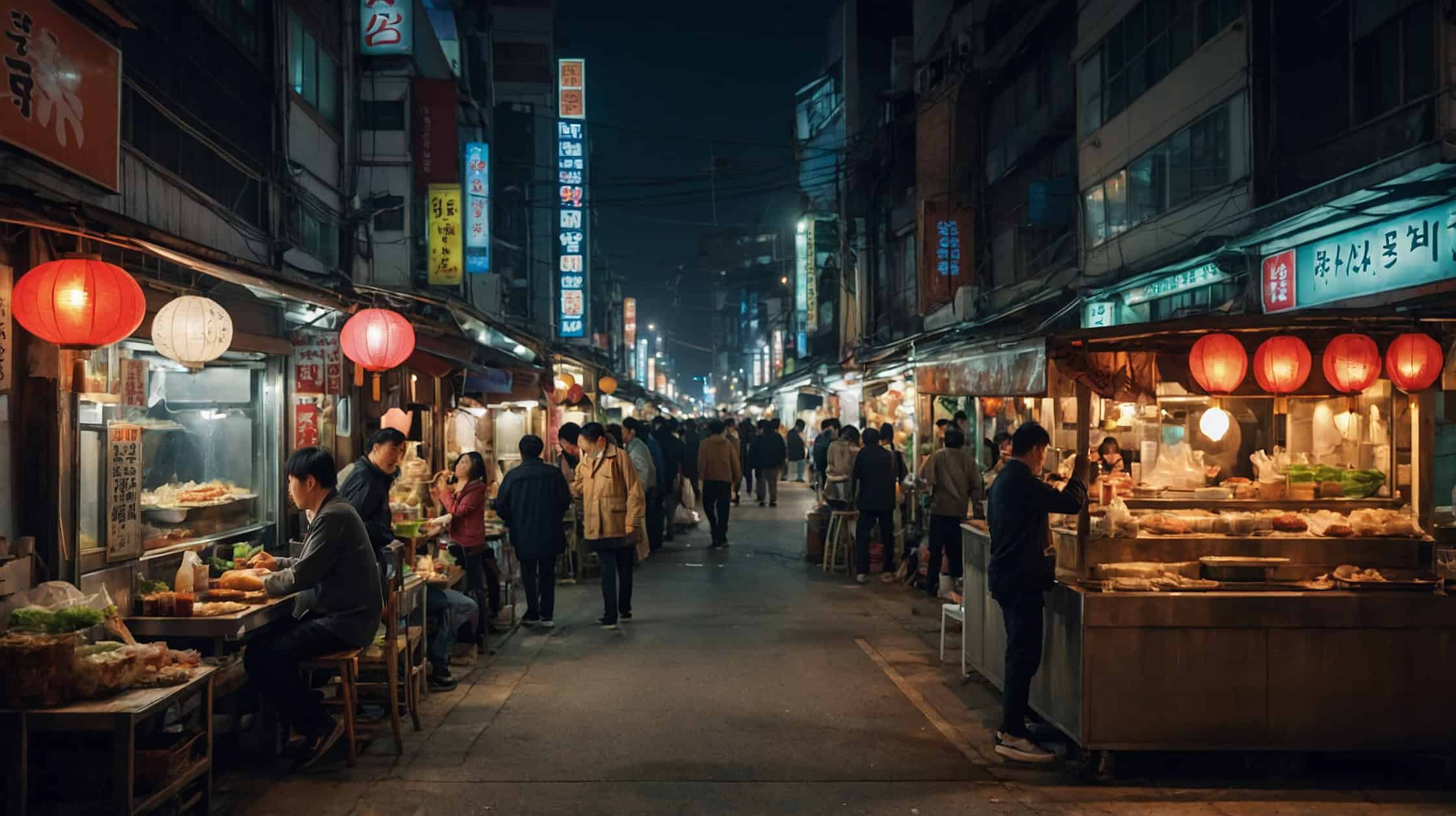
🎫 Korean Exclusive Tours for August
Seoul: Palace, Temple, and Market Guided Foodie Tour at Night
Experience the enchanting allure of Seoul under the stars with the Palace, Temple, and Market Guided Foodie Tour at Night. This 4-hour journey begins with a visit to Changgyeonggung Palace, renowned for its stunning architecture and historical significance.
As twilight descends, the palace is bathed in a magical glow, offering a unique nighttime perspective. Next, wander through the serene Jogyesa Temple, adorned with mesmerizing lanterns illuminating the night sky. Let the peaceful ambiance of the site envelop you, providing a tranquil respite from the bustling city.
Conclude your evening adventure with a culinary escapade at Gwangjang Market, one of Seoul's oldest and largest traditional markets. Here, you'll have the opportunity to savor various Korean delicacies, including makgeolli (traditional rice wine), for those at least 19 years old.
The market's vibrant atmosphere and rich cultural tapestry make it the perfect finale to your night tour. With the convenience of wheelchair accessibility, the guidance of knowledgeable local experts, and the flexibility of reserving now and paying later, this tour is tailored to accommodate all types of travelers.
Plus, the option of free cancellation up to 24 hours in advance ensures a stress-free booking experience. Check availability to secure your spot and immerse yourself in Seoul at night.

Seoul: Gwangjang Market Netflix Food Tour
Embark on a mesmerizing journey through Seoul's vibrant culture with the Gwangjang Market Netflix Food Tour. Begin your adventure at the iconic Insadong Culture Avenue, renowned for its rich tapestry of traditional Korean arts, crafts, and antiques. The avenue's bustling energy offers an authentic glimpse into the heart of the city's cultural and culinary heritage.
Next, meander through the quaint alleys of Ikseondong, where beautifully preserved hanok (traditional Korean houses) are a testament to Korea's architectural charm. This hidden gem's serene ambiance and vintage aesthetics provide a delightful contrast to the urban hustle.
The highlight of the tour is the gastronomic experience at Gwangjang Market. Savor 3-5 varieties of delectable Korean street food, carefully curated to offer a taste of Korea's culinary tradition.
From savory tteokbokki to sweet hotteok, each bite is accompanied by fascinating stories about the history and culture behind these popular dishes. This enriching 3-hour tour is led by a knowledgeable local English-speaking Korean guide, catering to private and small groups.
❓ Frequently Asked Questions
Summer in South Korea can be steamingly hot, with long periods in the low 90's (mid-30s in Celcius) during July and August. This is also the stickiest and the most humid time to travel to South Korea, so I advise you avoid traveling during this time if at all possible, or plan a day trip to one of Korea's many water parks.
The best time of year to visit the beaches of Jeju is during the summer, from June to August, when the weather is warm. Jeju Island, in particular, is overall an excellent destination for water sports enthusiasts; visitors can indulge in all sorts of activities, such as swimming, snorkeling, and scuba diving.
If you enjoy the hustle and bustle of city life, as well as shopping and visiting beaches, then Busan is an excellent choice. On the other hand, Jeju Island is the place to be if you're looking to escape the city and embrace a slower pace of life amidst nature. Known for its stunning natural scenery, the island offers a serene environment with breathtaking landscapes, from lush green fields to volcanic craters and picturesque waterfalls.


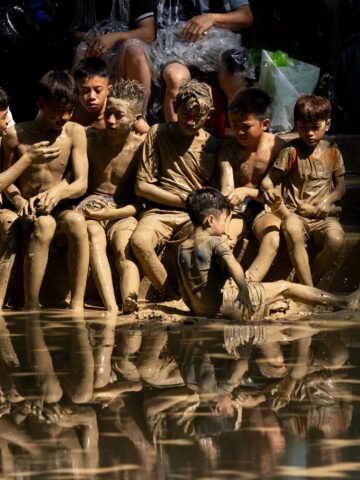
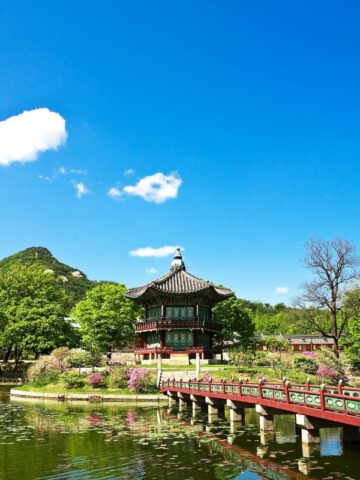
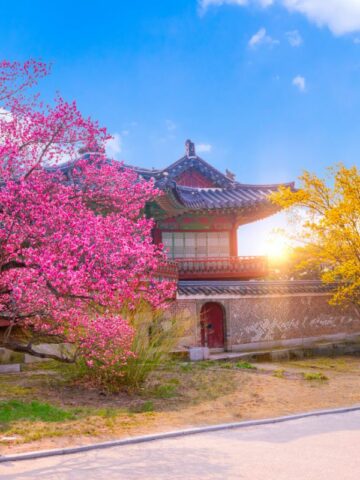
Comments
No Comments